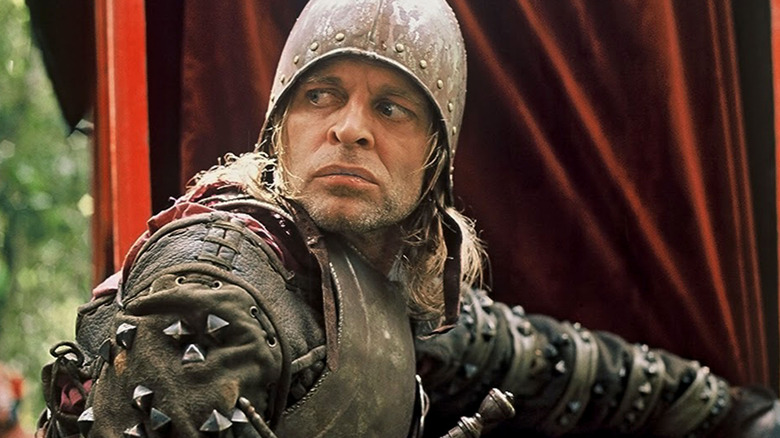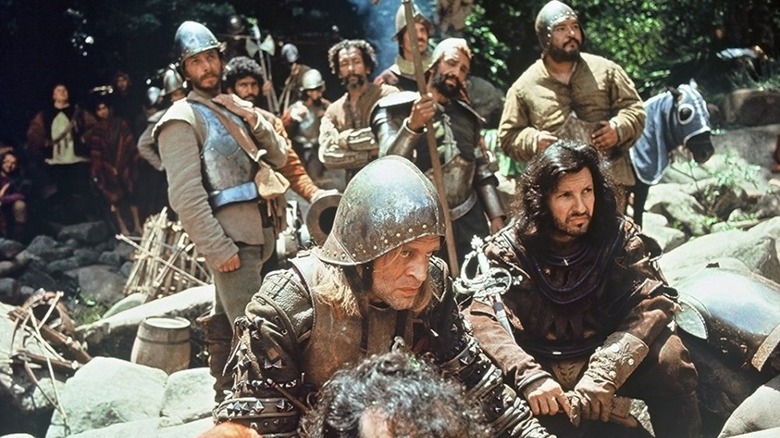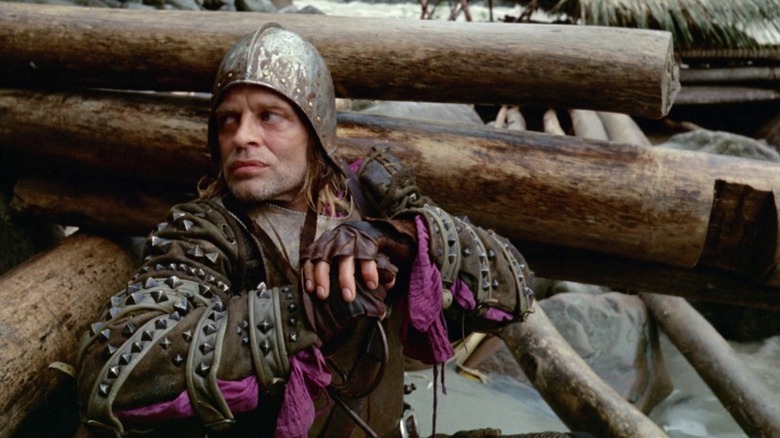Aguirre, The Wrath Of God's Enigmatic Ending Wasn't Werner Herzog's Original Plan
Werner Herzog is renowned worldwide for his films featuring ambitious protagonists with impossible dreams locked in unwinnable battles against nature. "Aguirre, the Wrath of God" is the acclaimed 1972 entry in his directorial catalog. The period piece centers around a Spanish soldier, played by the notoriously tempestuous German actor Klaus Kinski, who leads a group of conquistadors on an ill-fated journey through South America in search of the fabled city of El Dorado.
Herzog has since revealed in an interview with Offscreen that his epic historical drama originally had another ending planned. Both the current ending and his initial idea offer a mystical and thought-provoking conclusion to the award-winning film, so it is hard to say which would have made for a stronger denouement. Either option would prove technically challenging, but anyone familiar with Herzog's work knows that extreme difficulty is only a form of motivation for the director.
Man vs. nature
The current ending of "Aguirre" includes one of the most breathtaking images that the director has ever produced — a boat lodged in a tree. This unforgettable image is symbolic of a running theme in "Aguirre" and Herzog's work in general: man versus nature. The titular protagonist spends the film's duration battling the elements, at their strongest and most mystical in the thick of the Amazon rainforest, only to find that the man-made vessel which represents his only hope for escape has also been entrapped by the forest.
The conflict of human ambition rubbing up against the limitations of the natural world can be found in other popular Herzog movies, such as his 2005 documentary "Grizzly Man" about an environmentalist who devotes his life to living among bears. In "Aguirre," the mythical city of El Dorado represents the pinnacle of man's untethered aspirations. The setting of the Amazon rainforest is not merely incidental, either — as the most dense environment for wildlife on the planet, it is in many ways the pinnacle of nature. The film's closing image encapsulates its central problem in all of its ethereal glory, and establishes the winner of the battle once and for all — nature. It might surprise fans of the film to learn that this stunning feat of set design and construction was surprisingly not Herzog's initial idea for the ending.
Both endings were heavily symbolic
Herzog tells Offscreen that, in the original ending, the titular protagonist attempts to take a raft out to sea but is continually swept back to shore by the counter-current. "The Amazon actually goes backwards," he says, adding that "a parrot would scream 'El Dorado,' 'El Dorado.'" The Amazon moving backwards is emblematic of Aguirre's impossible dreams. This connection is drawn still more directly through the parrot, which taunts the soldier with the name of the city he seeks.
The raft failing to sail out to sea would have made for a powerful ending, but it likely would have presented some technical difficulties in the shooting process. A countercurrent might be difficult to capture clearly on film, whereas a stagnant set-piece like the boat in the tree creates a striking still image. Herzog adds that there was no way of getting materials like papier-mâché or plaster in the jungle. Instead, he hired a group of locals to build a boat around a large tree. It is up for debate as to whether the boat is real or a hallucination within the world of the film, but this confirms that the boat was real in a material sense.
Those interested in learning more about Herzog's process would be well-advised to check out "Burden of Dreams," a must-watch documentary about filmmaking that follows the shooting of his subsequent collaboration with Kinski, "Fitzcarraldo," and the many insurmountable challenges that came with it.


